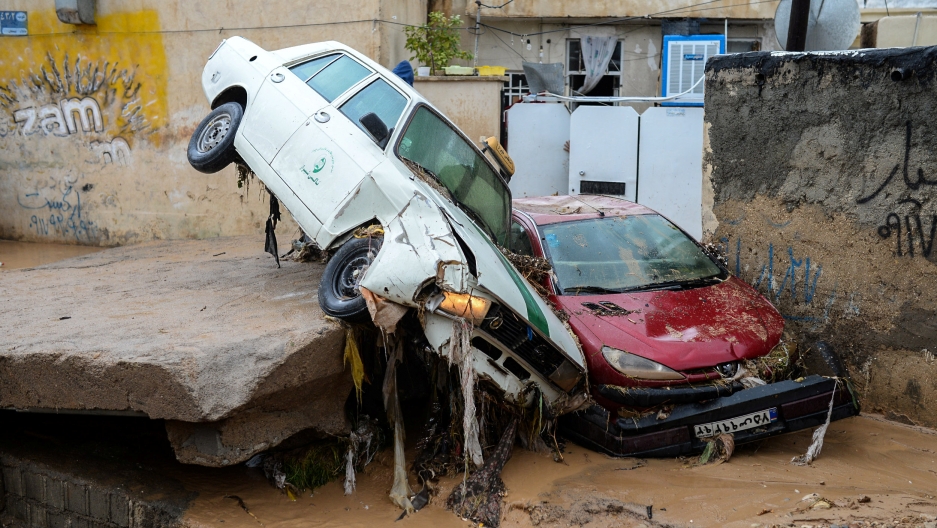Iran wasn’t ready for these huge floods, but they should get ready for more in the future – “Entire villages were washed away in a matter of minutes”

By Shirin Jaafari
29 April 2019
(PRI) – Since March, Iran has been ravaged by record rainfall and unprecedented flash flooding. At least 26 of 31 provinces have been impacted by the deadly floods.
One city received 70% of its annual rainfall in a single day. Dozens of people have died.
“This is the largest disaster to hit Iran in more than 15 years,” Zahra Falahat, the Iranian Red Crescent’s under secretary general for international affairs and international humanitarian law, said in a statement. “Entire villages [were] washed away in a matter of minutes, countless homes and buildings [were] damaged and completely destroyed.
Pictures and videos posted on social media show total destruction. A video posted on Twitter shows cars and trucks being tossed around in the water, like toys. One car floats by while a man clings to its roof.
The Iranian government has been accused of mismanaging the response to the disaster, with some residents of afflicted areas complaining that action has been slow and insufficient.
But Iran’s Red Crescent has repeatedly complained that US banking sanctions reimposed last year make it impossible to receive donations from outside the country. US Secretary of State Mike Pompeo put the blame on Iran’s leaders. […]
The Iranian government didn’t respond to a request for comment. But Kaveh Madani, who used to be the deputy head of Iran’s Department of Environment, said he is disturbed about the response to the floods. “To see the people of your country going through all these troubles which could have been avoided with some planning and foresight,” he said.
Madani went to school in the US and Europe. In 2017, he went back to Iran to work at the Ministry of Environment. He was critical of the government’s environmental policies — specifically, how it has mishandled water management for decades. “There was a group of hard-liners and radicals who were operating for years in a certain way. They were not happy with my statements,” Madani said.
Among other things, he thought the government was ignoring the effects of climate change on rainfall. And the need to better prepare. The response was fierce: “They called me a ‘water terrorist;’ they called me a “bioterrorist,”” explained Madani. “They blamed me for my efforts to ratify the Paris Agreement, arguing that I wanted to limit development in the country, you know — the same argument that Donald Trump is making about the Paris Agreement and how destructive it is to the economy.”
After roughly six months on the job, Madani resigned. He left Iran and is now a researcher at Yale University.
Today, he shakes his head at the Iranian government’s response to the floods.
“You know, why they’re operating this way. Why they’re not prepared at all for evacuation and rescuing the victims and so on.” [more]
Iran wasn’t ready for these huge floods. But they should get ready for more in the future.